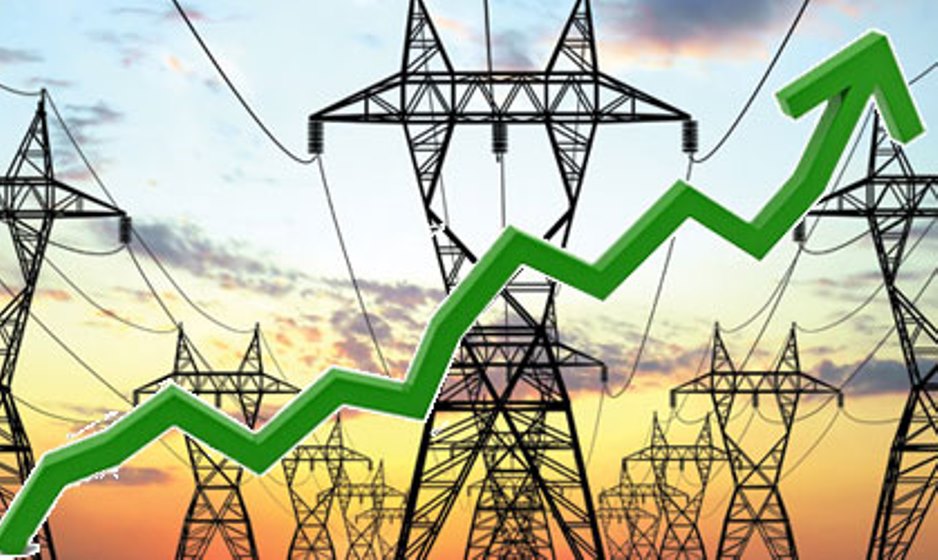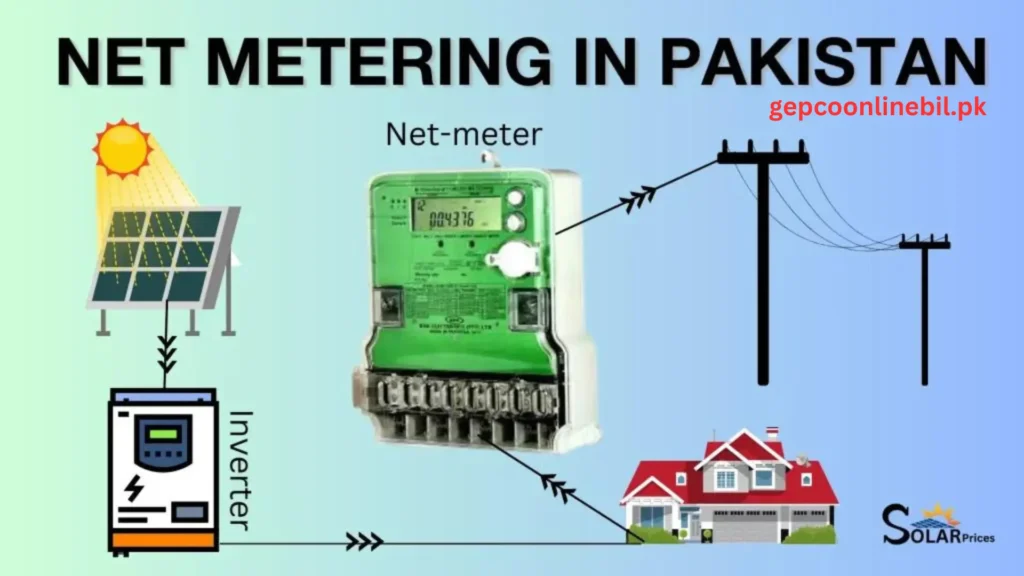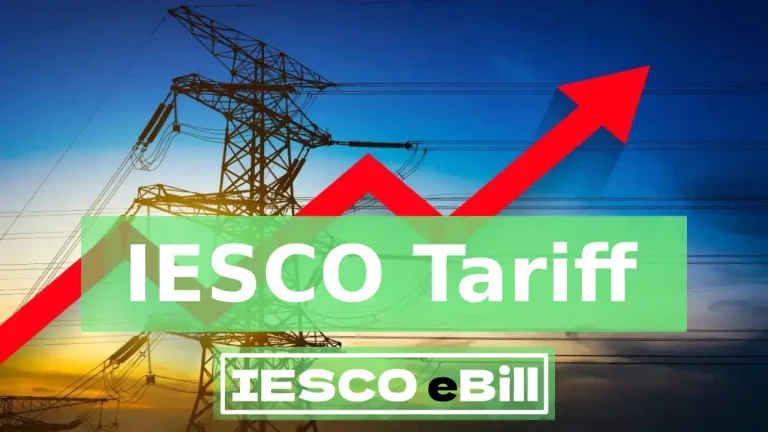As an Islamabad Electric Supply Company (IESCO) customer, understanding your electricity bill’s various components is of great value. Knowing how fixed fixed charges in electricity bill, rate per unit in Pakistan are calculated (plus factors like peak hours usage fees, taxes, and additional charges) will allow you to more effectively manage your consumption.
In this blog post we’ll look closely at IESCO tariff structure, fixed charges in electricity bill, breaking down each cost component to illustrate how it affects your bill calculation.
What Are Fixed Charges on My Electric Bill?
Fixed charges are monthly charges added to your electricity bill regardless of actual usage, covering operational costs associated with maintaining infrastructure like distribution networks, transformers, poles and lines.
In IESCO’s case, fixed charges help ensure smooth power delivery to homes and businesses of all kinds; whether one unit of electricity is consumed per month or 1,000 are consumed, fixed charges remain an integral part of monthly expenses.
Residential consumers with typical meter connections typically encounter fixed charges ranging from PKR 75 to 150 per month, depending on their usage category.
While these fees might appear minor at first glance, over time they add up and make up a considerable part of their bill and especially among low-usage consumers.
Electricity Rate Per Unit in Pakistan
One of the key components of your IESCO bill is its electricity rate per unit in Pakistan. This figure is determined by how much electricity (kilowatt-hours) you consume during each billing cycle; its per-unit cost varies based on consumption brackets that have been divided into slabs to encourage energy conservation; more units consumed means higher per-unit costs.

At present, one unit costs between PKR 22 to 45 depending on which slab your usage falls under. Here is how the slab system typically operates:
- 0-50 units: Lower slab rate, around PKR 12-20 per unit
- 51-100 units: Moderate rate, between PKR 18-25 per unit
- 101-300 units: Increased rate, typically PKR 25-35 per unit
- 301+ units: Highest rate, up to PKR 45 or more per unit
As more units are consumed, their individual unit costs increase; this will have an adverse impact on your monthly electricity bill.
IESCO Peak Hours as a Key Factor in Energy Costs
One key element that influences your electricity bill is IESCO peak hours. These peak hours refer to times when demand for electricity peaks, usually between 6 PM and 10 PM when people return home, switch on multiple appliances, and lighting use rises significantly.
Electricity rates tend to be significantly higher during peak hours due to fixed charges in electricity bill (usually late night or early morning), encouraging consumers to shift their heavy energy usage away from peak times to reduce strain on the grid and save money.
If you use energy intensive appliances like washing machines, air conditioners or electric water heaters during these off-peak hours it would help save you money by avoiding increased costs associated with peak hours usage.
Understanding 1 Unit Prices in Pakistan
“Unit” in electricity billing refers to one kilowatt-hour (kWh). Prices per unit can differ based on consumption levels, region and consumer category in Pakistan; for IESCO customers this cost per unit is determined by their tariff schedule regulated by NEPRA.
Domestic users‘ unit costs might start from as little as PKR 20 per kWh for basic usage and reach as high as PKR 35 or more for higher consumption brackets, so it’s crucial that they monitor their consumption closely as moving into higher slabs can significantly affect your bill.
Furthermore, green meters (more below) might have different unit prices depending on how much renewable energy they produce and use themselves.
IESCO Green Meter Bill and Net Metering
For consumers concerned with sustainability, IESCO offers a green meter bill option. The green meter allows homeowners and businesses to connect solar panels or wind turbines directly to the grid via net metering, providing homeowners with electricity generation while sending any excess back into the system via net metering.
Green meters provide several advantages. One such advantage is IESCO credits you back for any excess energy you produce, thus helping lower your overall electricity bill and promote renewable energy while simultaneously reducing load during peak hours on the grid.

If this option appeals to you, be sure to explore its possible impact on billing if you produce significant amounts of renewable energy.
IESCO Bill and Online Services
Customers of IESCO often search for an IESCO duplicate bill or wonder how they can check IESCO bill online. Thankfully, IESCO provides an easy-to-use online platform which allows customers to access their bills anytime of the day or night and here’s a brief guide on how you can utilize these services:
- Check Your Bill Online:
Visit the official IESCO website, enter your reference number, and quickly access your current bill. For those in need of duplicate bills due to misplaced or lost bills, this service also makes generating duplicate bills easy and simply generate them on the same platform.
- Islamabad Bill Check:
This platform also allows residents of Islamabad and surrounding areas to check their electric bill details.
These online services make life simpler for residents in Lahore or other IESCO service areas, giving you access to your billing information without having to visit physical offices.

Meter Reading Date in IESCO
If you’re curious about when your IESCO meter reading date will occur, it is essential to know that they follow a monthly reading schedule which typically occurs between the 20th and 25th.
By knowing when this event occurs you can better predict when your bill will arrive and prepare accordingly.
Intense competition exists within the automotive sector, and companies need to remain ahead of competitors by adopting measures such as eliminating waste from production processes.
Conclusion
Knowledge of taxes, charges, and structure in an IESCO electricity bill is vital to managing energy costs effectively. From fixed charges in Pakistani electricity bills to changing rate per unit in Pakistan, every component plays a part in how your total bill is determined.
Keeping an eye out for peak hours as well as exploring alternative billing models like green meter billing may provide opportunities for cost savings and sustainable energy use.
By making informed decisions about when and how you use electricity, you can take control of both your expenses and carbon footprint.
With increasing availability of renewable energy sources in Pakistan, monitoring consumption, taking advantage of off-peak hours, and utilizing net metering will all help optimize both use and costs.
FAQs
What Are Fixed Charges in my Bill?
In your electricity bill, fixed charges refer to base fees which cover infrastructure maintenance costs regardless of consumption levels.
What is the electricity rate per unit in Pakistan?
In Pakistan, electricity rates per unit range between 22 PKR to 45 PKR depending on consumption levels and consumer categories.
What Are IESCO Peak Hours?
Peak hours at IESCO run from 6 PM to 10 PM each night when electricity rates increase due to increased demand.
How Can I View or Download My IESCO Bill Online
To easily check your IESCO bill online, visit their official website and enter your reference number to access and download the bill.
What is a green meter bill?
A green meter bill is part of IESCO’s net metering program and allows consumers to generate renewable energy sources like solar and feed it back into the grid, thereby lowering their overall bill.
What is the Average Monthly Consumption Cost in Pakistan?
This typically ranges between PKR 20-PKR 45 depending on how much of an energy source needs to be purchased per month for consumption purposes.



8 thoughts on “IESCO Tariff Structure | Taxes and Charges of IESCO Bill”